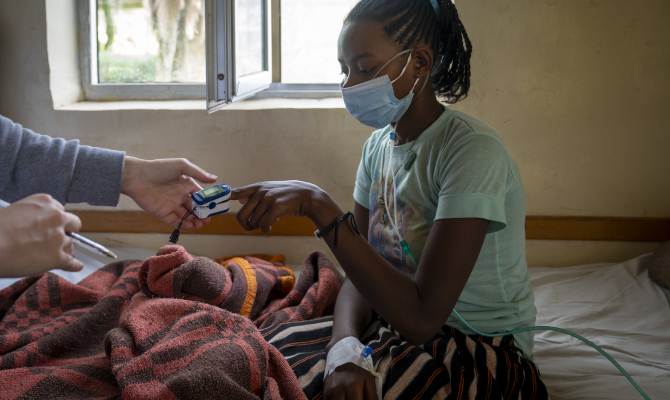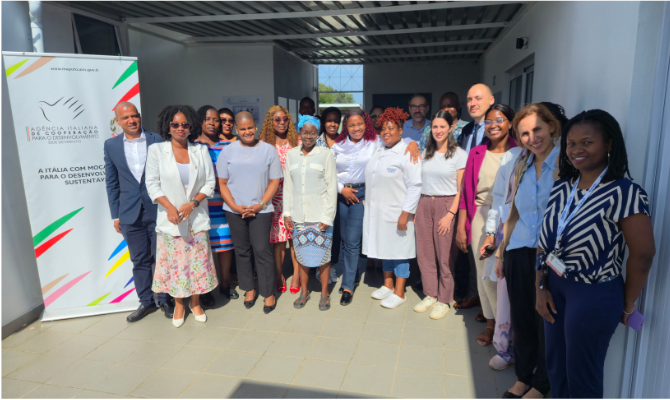Operational research is an essential tool to understand contexts of intervention, identify effective actions and unlock good practices to be integrated into health planning. This was the approach of Fighting TB strengthening the prevention, early diagnosis and treatment project implemented by Doctors with Africa CUAMM in partnership with Università di Bari and Global Fund in collaboration with the Oromia Health Bureau, funded by Aics.
The intervention merged operational research and on-field activities with the aim to improve access to tuberculosis prevention, diagnosis, and treatment services in the South West Shoa Zone and the three districts/woredas of Goro, Wolisso Rural, and Wolisso Town therefore achieve Sustainable Development Goal 3.3 and Strategic Objective 1 of the Global Fund.
«CUAMM is trying its best to improve the work on infectious disease, especially TB, in the South West Shoa Zone, and also to advocate for it.This is a challenge we are committed to take up, together with the support from donors and stakeholders» said Luisa Gatta CUAMM Country Manager in Ethiopia.
On Thursday, November 28, we gathered at St. Luke Hospital in Wolisso, with partners and local authorities to give account of the work done on TB response over the past 2 years, and to disseminate the results of a research led by our partner University of Bari.
«Despite the burden Tb represents on people and health systems, efforts on research are still limited. With this investigation we aimed to detect the impact of Tb in South Shew Zone to improve diagnostic services therefore mitigate the impact of the disease» said Giacomo Guido, researcher of University of Bari.
Working in collaboration with Ethiopian health authorities in Wolisso Town, Wolisso Rural and Goro districts, CUAMM has implemented interventions on multiple levels. First, it has increased awareness and consequently, the demand for TB services by providing training to a total of 277 Health Extension Workers (HEWs) and community leaders. Additionally, it engaged the community in advocacy activities during 40 events held in several venues including schools, prisons, factories and marketplaces across the target area. These efforts were complemented by screenings conducted for a total of 499,047 individuals.
«The work we have carried out over the last year is something we cannot but appreciate. It was a load on our shoulder, yet by cooperating with CUAMM we managed to overcome difficulties and challenges and gain good results especially in South West Shewa» said Lemma Desu M&E Coordinator at Oromia Health Bureau

Secondly, CUAMM strengthened the capacity of health personnel in early diagnosis, treatment and management of TB patients within health facilities by training 72 healthcare workers on clinical management of TB. This was achieved through on-the-job training and the provision of essential supplies for diagnostic services and clinical activities in 16 health facilities and at St. Luke Hospital. Finally, the intervention enhanced the ability of zonal and national health authorities to plan, coordinate and monitor services for the diagnosis, treatment and follow-up of TB patients. Key activities included geo-mapping tuberculosis cases, organizing regular meetings at district and zone level and analysing the results of the operational research conducted by the University of Bari.
«When we were doing TB preventive activities there was a shortage of slides and medical equipment. This project identified these gaps and helped filling them both at local and zonal level. I believe that by scaling up the activities to other districts, we can accelerate the response to TB» stated Tesfaye Kitaba – SWSZ Health OfficeTB focal person.
The intervention conducted over the last two years has shown that regular joint supportive supervision and performance review meeting improves the quality and performance of care for TB patients. Moreover, involvement of community leaders on prevention and control of TB and identification of presumptive cases is paramount in reducing TB incidence as it also is the active case search for TB detection. Finally, collaboration with multiple stakeholders throughout the implementation of activities has been key to ensuring their effectiveness and sustainability.
«We are working closely with CUAMM staff as a whole. This tight collaboration between CUAMM, Oromia Health bureau, Oromia bureau of finance, Health minister and all the other stakeholders is key for the sustainability of the project which is something we truly appreciate» said Guteta Degefa – SWZS Health Office Head.
Ethiopia is one of the countries in the Africa region with the highest burden of TB. Despite the evident progress achieved, as for 2020 the incidence of Tuberculosis was 132 per 100.000 people and the mortality rate of 17 per 100.000. Moreover, 51% of households in Ethiopia count a patient facing catastrophic costs due to the disease.
Generally, TB patients in low- and middle-income countries face medical expenses, costs of seeking and staying in care, and income loss equivalent to more than 50% of annual income. Such factors end up triggering a downward spiral whereby the patient struggle in completing treatment, is more likely to have repeat episodes and more likely to develop drug resistance resulting in more expensive and arduous treatment. Worldwide, TB has probably returned to being the world’s leading cause of death from a single infectious agent, following three years in which it was replaced by coronavirus disease (COVID-19).
«Worldwide TB continues to be fueled by inequity. Vulnerable groups like IDPs and refugees, as well as people in isolated places are those whose access to diagnostic services is often neglected. Ensuring detection of undiagnosed, untreated or unreported cases is the challenge we have to address together with that of multi-drug resistance. – said Alessia Montanari External Relations and Communications at Global Fund Geneva – in order to achieve the goal, we are scaling up our efforts to develop innovative tools and to decrease the price for diagnostic services».





